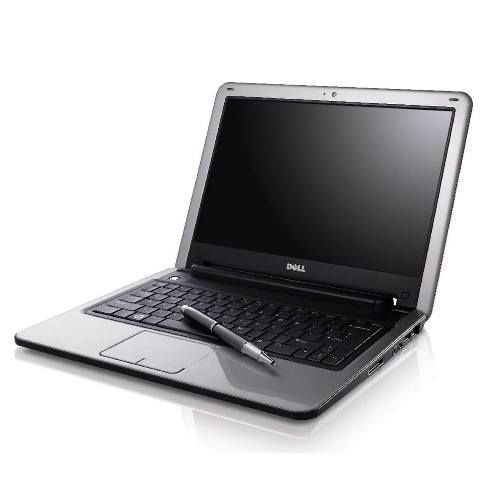While the first netbooks featured 8.9-inch displays, with later models usually boasting larger 10.1-inch panels, Dell’s Inspiron Mini 12 is the first we’ve seen to use a 12.1-inch screen.
Our quick take
Overall, it’s difficult to see the Mini 12 as value for money. The specifications are disappointing at this price point, and the 12-inch display also means users are more likely to consider buying a proper laptop.
While the big display may confuse matters, however, it’s also this machine’s saving grace. It allows for a larger and more comfortable interface, and the quality of the screen makes it a valid proposition for those wanting to work longer hours. Just consider your needs carefully, however, as despite the size, it’s still a netbook.

Dell Inspiron Mini 12 notebook - 3.5 / 5
| FOR | AGAINST |
|---|---|
|
|
It’s bound to appeal to some users - the larger screen inevitably resulting in a less cramped interface, but does the extra size mean you’d be better off with a regular, more powerful full-sized laptop?
Colours and contrast on the Super-TFT screen are excellent, as with the smaller Mini 9. Dell has put the extra real estate to good use, fitting a higher 1280 x 800 pixel resolution than most netbooks and with enough space for multiple windows, it offers better usability than its rivals.
The most surprising thing about this machine is just how thin it is. Those expecting a regular laptop running netbook components are in for a pleasant surprise, as it’s a truly portable device. It measures just 26mm in depth, making it one of the thinnest netbooks on the market, and the 1.3kg weight is in keeping with its 10-inch rivals.
We’ve no complaints about the quality of this machine - some of the shiny plastics can scratch a little too easily, but overall it’s a robust and well made design. The keyboard is better than most netbooks we’ve seen, offering large and responsive keys. Quality is also impressive. With a flat finish, it’s tricky to distinguish between keys when touch-typing, however, and typing mistakes proved more common than we expected.
The Mini 12 is the first netbook we’ve seen to feature an Intel Atom Z520 processor. It’s the same chip found in Sony’s considerably more expensive VAIO P-series ultraportable, but at 1.33GHz it offers slightly less power than the regular 1.6GHz Atom chip. Backed by 1024MB of memory, and running Ubuntu Linux, we found it more than rapid enough for daily use. The 3.5-hour battery life was no better than average, however.
Unfortunately, in terms of operating systems, the Mini 12’s larger screen puts it outside Microsoft’s parameters when it comes to netbooks eligible to run Windows XP. As such, if you don’t like Linux, you’ll have to stick with Windows Vista. This machine is more expensive, at £399, but it does feature a 1.6GHz processor and 80GB hard drive. That said, with just 1024MB of RAM, don’t expect it to fly.
While most rivals offer either limited storage space in the form of a robust and power-efficient SSD, or large capacities from a more fragile mechanical hard drive, the Mini 12 disappoints by combining the two. You’ll find a regular hard drive in place, but at just 40GB, it falls considerably short of rivals.
Standard networking features are also disappointing, limited to 802.11b/g and 10/100 Ethernet. It may not affect everyday use, but again it’s a step behind other netbooks at this price. Rounding up the specification are three USB ports, a 3-in-1 card reader, 1.3-megapixel camera and a VGA-out port. Bluetooth is also built-in.
To recap
An oversized but surprisingly portable netbook with a great screen and good quality. It still won’t replace your main laptop however
